On my way to the AGO 2 site I thought about my recent time at South Pole Station.
As I mentioned earlier when I arrived at South Pole Station it was a challenge for me physically. Hitting the thin cold air was like having 75 pounds placed on my shoulders. South Pole Station is 9603 feet above sea level, and that's where I came from … sea level at McMurdo Station. However you must also factor in the Earth's atmosphere is thinnest at the poles and thickest near the equator, so in reality (depending on what kind of weather is coming in and the barometric pressure associated with it) South Pole Station sits underneath an atmosphere typically found at an elevation of about 10,500 feet above sea level … out in the thin air where with every breath you only take in two-thirds the amount of oxygen you would at sea level. During acclimation your brain swells and this is where some people can get into trouble with altitude sickness or Hypobaropathy. Insufficient room in the skull to accommodate swelling can lead to sickness or in severe cases death. After a few days I pretty much acclimated … not sure if that means I have a small brain or a big head :-) .
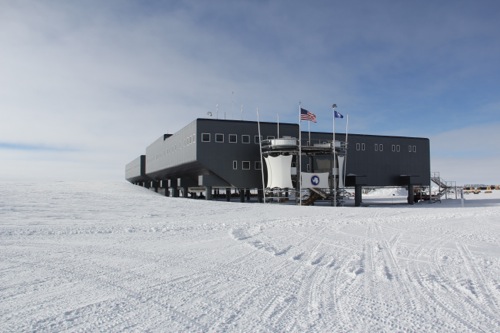
In many ways the Station is like a remote space station orbiting the Earth or on a distant planet. The facility has what humans need to survive, conduct their work, and maintain a level of sanity, including science labs, a cafeteria, small medical facility, power generation station, greenhouse, fitness room, library, etc., and if you every venture outside the Station you best suit up or you just might not come back alive. For the most part temperatures in the Antarctic summer are below 0 F … and in the winter it can get below -100 F, and that's not taking into account the wind chill. This is as remote and harsh a place as you can get to on the Planet. But just like the great explorers of the past, there is no shortage of people wanting to be here. From what I've been told even Dinning Room Attendants at McMurdo Station typically have 5 years of college education on average. And it can be even more competitive to get into South Pole Station. It is perhaps a testament to the human spirit … to what ever it is inside we humans that drive us to go where others have not and to achieve that which our predecessors considered impossible, that brings us to Antarctica … one of the last frontiers on Planet Earth. Something to to consider is that more people have climbed Mount Everest than have wintered over at the South Pole. Not that I'm wintering over, but still pretty amazing to think that I'm here and having such rare and remote experiences.
So … what have I been doing at the Station?
First I've been acclimating. It took me about three days before I could function normally, and even then I'd find myself winded if I tried coming up steps too fast. During acclimation I also made it out to see some of the neat science and engineering projects under way here at the Station.
Most people don't realize it, but the region around the South Pole is the driest desert on the Planet, and as such is an excellent place for radio astronomy … in particular microwave astronomy.
I'm sure you've used a microwave oven to heat up dinner before … right? How does a microwave oven work? To put it simply a microwave oven generates microwaves (a form of electromagnetic radiation). The microwaves happen to be at the wavelength of energy absorbed by water molecules, so microwaves heat up the water molecules in your food. Give this a shot. Place a dry microwave-safe plate inside your microwave oven and heat the dry plate for 30 seconds. Pull it out and place your hand on the plate. Not very warn is it? Now place about 10 drops of water on another dry plate and place it in the microwave for 30 seconds. Pull it out and place your hand on the plate. Notice it's significantly warmer. Since the food we eat has a lot of water in it, microwave ovens are ideal for heating up those leftovers.
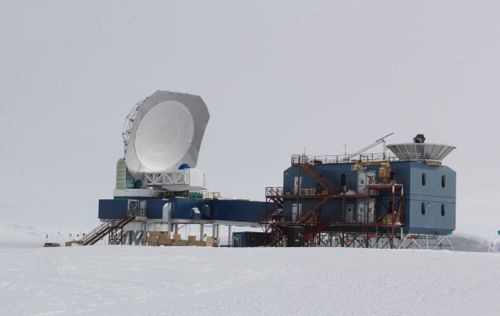
For more information about SPT visit http://pole.uchicago.edu/
The South Pole Telescope (SPT) has provided the most detailed view of the Cosmic Microwave Background left over from the Big Bang. Images from the telescope have allowed scientists to see variations in the distribution of matter in the early universe at a time only 400,000 years after the Big Bang. Today the telescope is being used to identify distant and massive galaxy clusters that formed as a result of these initial variations in the distribution of matter. What remains a mystery to scientists is the cause of this initial clumping of matter. If the Big Bang began from a single uniform point we would typically expected an even or smooth distribution of matter over space and time. It's just fascinating to me to think about how large telescopes like SPT are being used to look back in time, catching a glimpse of what our universe looked like billions of years ago.
Where does water come from to support the nearly 165 people currently living in the Station?

I also had an opportunity to go down into the ice tunnels some 30 feet below the surface. The sewage and water lines run through these man-made tunnels. If you think about it, water is essential for human life, and humans create a great deal of waste product as a result of living. These tunnels are nearly 2000 feet in length and a bitter cold temperature of -55 F inside. I spent an hour walking through these tunnels learning about the water/sewage system here at South Pole Station.
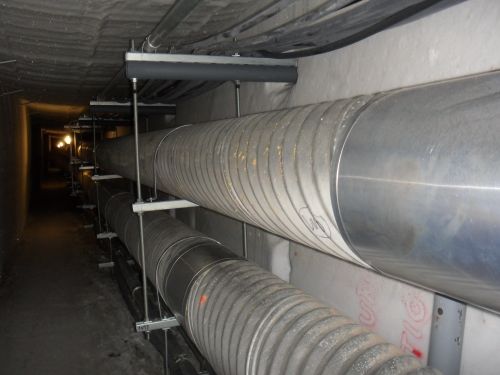
The water and sewage system here is pretty straight forward. I traveled down the tunnel about a 1000 feet to the "water well". Down the well hole they drop a brass plate and run electricity through it heating the plate. The plate melts the ice and the water is pumped out of the cavern to the surface. As you can imagine it takes a lot of energy to make a gallon of water, and as a result all residents of the Station are limited to two 2-minute showers per week.

And the sewage … go down the tunnels a bit further and a cavern in the ice has been created just for that purpose. Sewage is pumped through the pipe into the cavern where it will remain. And when one cavern fills up, it will get pumped into a new one. Currently engineers at the South Pole Station estimate they can generate enough water and handle enough sewage to support the station for the next fifty years. After that it's likely a new station will need to be built.
Want to be a Meteorologist at South Pole Station?
Jeremiah Jolliff is a meteorologist here at South Pole Station. Weather balloons carrying instruments that measure temperature, wind speed and direction, barometric pressure, altitude, and position are launched twice a day from South Pole Station. The balloon travels to a height of 130,000 feet before bursting and falling back to the surface. The data collected is added to other data from around the Globe, and used to model and predict weather here in Antarctica.
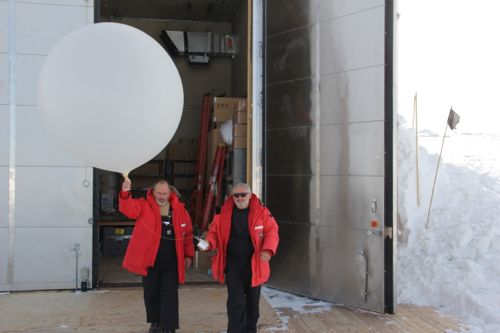
In addition to checking out the facilities at South Pole Station, I spent a lot of time working with my team to get ready for the upcoming field mission. We had two primary goals at AGO 2, first to replace the power management system, and second to dig out the AGO 2 box and raise it up out of the drifting snow.
Since there are no electrical lines here in Antarctica, when it comes to electricity you're on your own. In the past the AGOs where powered with a rather inefficient thermal electric generator (TEG) that burned propane. Each year these systems used 2500 pounds of propane, and brining any kind of fuel to the field is very expensive here in Antarctica. Several years ago the project engineers eliminated the TEG and switched to a combination of wind and solar power. One of the issues is you can't control how hard the wind blows, and it can get very windy out here on the East Antarctic Plateau. If the turbine turns too fast it can generate too much power, and as a result that energy needs to be dissipated or the scientific instruments will be destroyed. The current systems at the AGOs were failing so a new power management system was designed by AGO Engineer Andy Stillinger for installation.
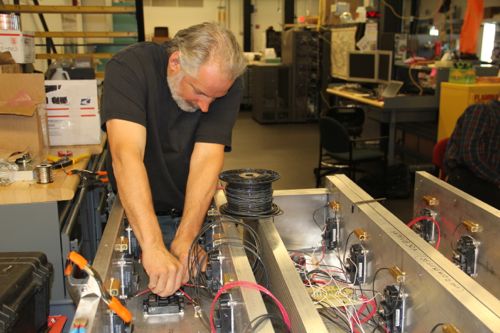


Comments